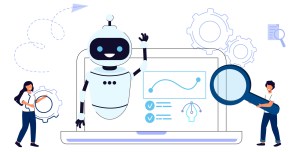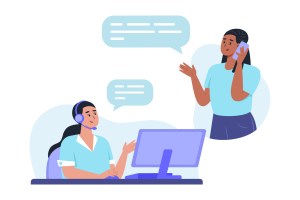What Does Customer Service Mean To Your Customers?



Companies need to serve customers based on the specific expectations the customer has. Learn how to identify customer expectations and meet them.

Salesforce Canada
Someone should do a “streeter” about the definition of customer service.
You know those quick interviews that TV crews sometimes do with a wide range of everyday people, where they’re all asked the same question? That’s what those in the media call a “streeter.”
Streeters are fun in part because the answers can be insightful, but also because of the differences between what those on the other end of the microphone will say.
A streeter based around the question “What does customer service mean to you,” for example, might lead a TV news crew to talk to a business executive, a teenager and even (perhaps unknowingly) an actual customer service rep on their day off. Let’s brainstorm some of their possible responses:
“I think customer service is when a company is helpful and friendly.”
“Customer service means they’ll actually fix my broken stuff without making me sit on the phone for an hour.”
“It’s when companies stand behind their promises and help you return a product and get your money back.”
What’s interesting is that none of these answers are wrong, but even if you add them all together, they tell an incomplete story.
That’s because every company, whether it’s a small or medium-sized business or a large enterprise, needs to serve customers based on what may be more specific expectations on what they want their experience to be.
You can generalize about customer service, but it really becomes powerful when the customer service you offer is woven into every step of the customer journey. While a dedicated team may handle troubleshooting or urgent inquiries, customer service needs to be in the mindset of those working in sales, marketing and other parts of the organization.
Getting to that point means doing some work upfront (or perhaps after customer service issues have had a negative impact on your growth) to better identify expectations and what you’ll have to do to meet them:
1. Flesh out your personas’ service stories
Many companies try to hone their sales and marketing strategies by creating customer personas — representative examples of their potential prospects and leads. These can be incredibly detailed in some cases, to the point where they are given names, ages and specific personal interests to help the team think of them as real people.
To a large extent, though, the stories we tell based on personas tend to cover what happens before they become aware of the company and the value of its products and services. The goal is to entice them and convert them into paying customers, so firms may not have spent much time thinking about what happens afterwards.
Rather than assume every story about your persona has a happy ending, sketch out a few scenarios where they run into trouble, or discover new challenges and opportunities for your company to bring value. Then go over the entire story from beginning to end, looking for the ways strong service could lead to repeat business.
The stories we tell with personas should not come to an abrupt end. Instead, think of them like a circle, where customer service is the glue that keeps each phase of the journey connected.
2. Collect and manage complaints as ‘data’
Companies are always looking for information they can use to drive more sales of their products and services, whether it is the customers’ interests, needs or pain points. They add demographic data into sales and marketing tools, or analyze activity like website visits. Complaints, on the other hand, are usually seen as something to overcome.
The most successful firms, however, have come to recognize that customer service involves much more than dealing with complaints as though they were checking items off a to-do list. Complaints are valuable data, because they help establish where disappointment and frustration emerges — which is the first step in improving.
Start with social listening and getting a sense of what customers are complaining about online. This doesn’t just have to include complaints about your own firm and its products, but those of your competitors too. That way, you might see opportunities to stand out by the customer service you offer.
Next, look back at the data in tools like Service Cloud to see trends and patterns with the complaints (or other feedback) customers have made over a period of time.
Your real goal is not to try and avoid getting customer complaints ever again — that would be impossible — but to minimize the same complaints being made over and over again.
3. Monitor (and adjust) customer service expectations across channels
For years now, pizza companies have been trying to position themselves as offering strong customer service by promising deliveries in half an hour or less. That’s great in terms of an in-person experience, but most companies have to connect with customers in many other ways, where the expectations are far different.
How quickly do your customers expect a reply when they reach out via email? What about when they make a post directed at one of your social media accounts? If you don’t know the answer, you don’t really know what customer service means to them.
Again, this is where looking more closely at the data can help. How quickly were issues resolved across a particular channel, and what impact did that have on future purchases from those customers? You can also use surveys to help gauge what’s acceptable in terms of providing service across a particular channel.
Also, don’t forget about self-service as a channel. In some sectors, customers might come to expect companies to offer online communities where they can turn first to their peers for help and advice. A chatbot, meanwhile, may help them solve problems themselves, but only if the experience is designed to make it quick and easy.
As you try any or all of these approaches, have an ongoing discussion with your team about what customer service means to your customers. Have everyone try to write out how they could articulate it in a paragraph or a few sentences.
Look at the extent to which there is some consistency among what you hear. And then keep listening to the customers themselves to continually refine and match what they’re expecting from your business.




















